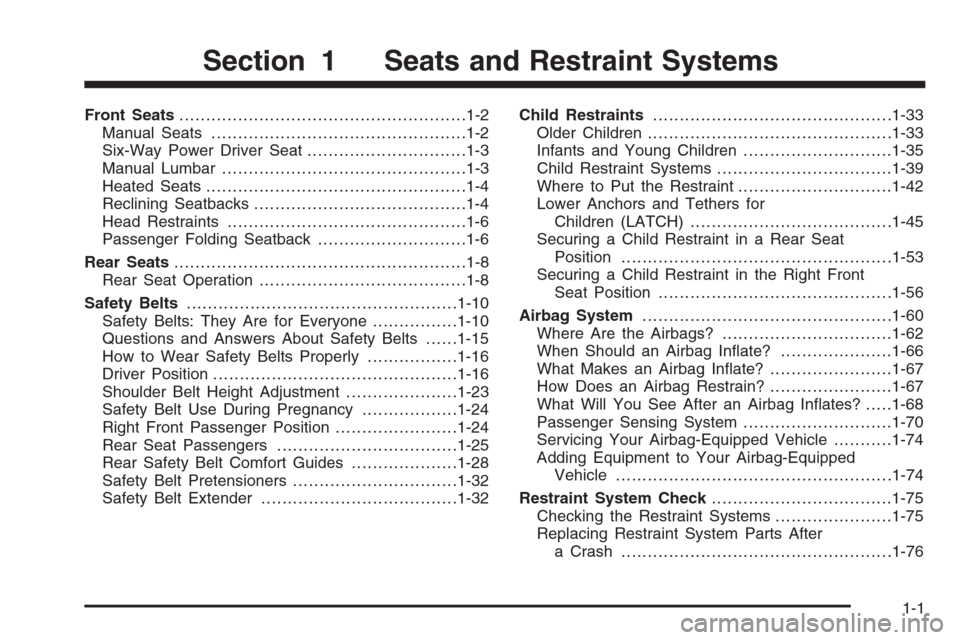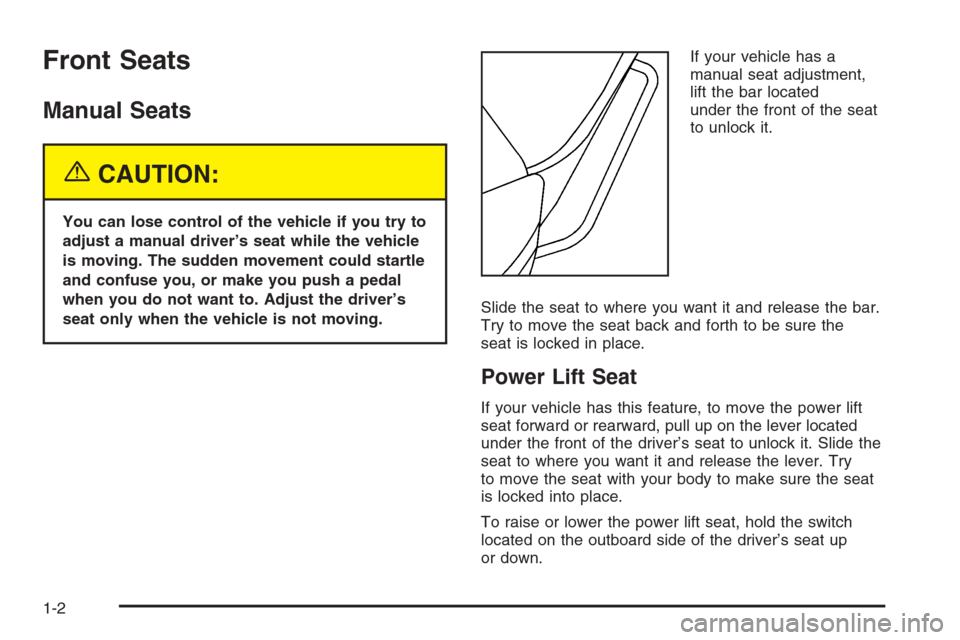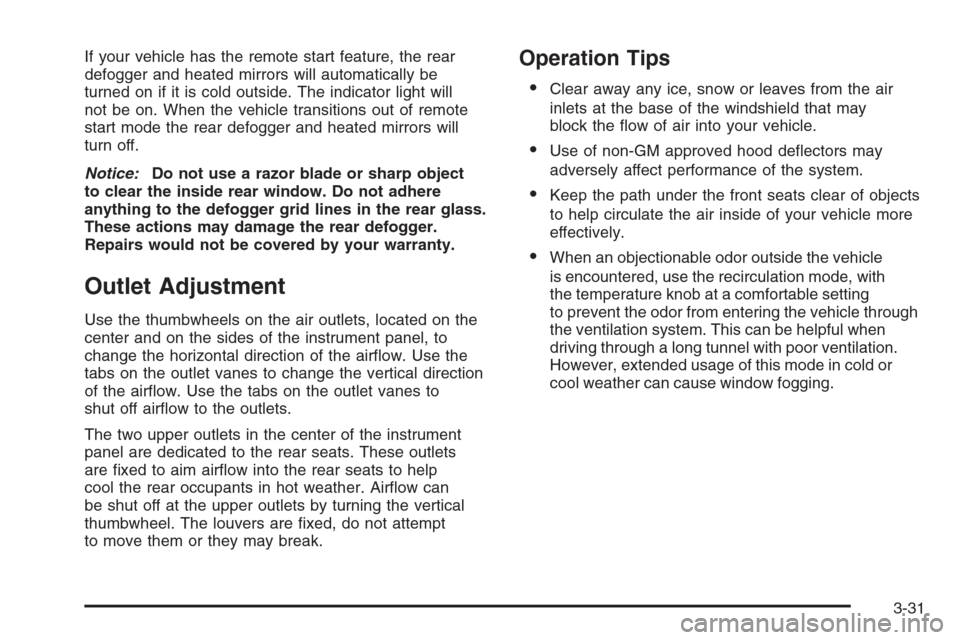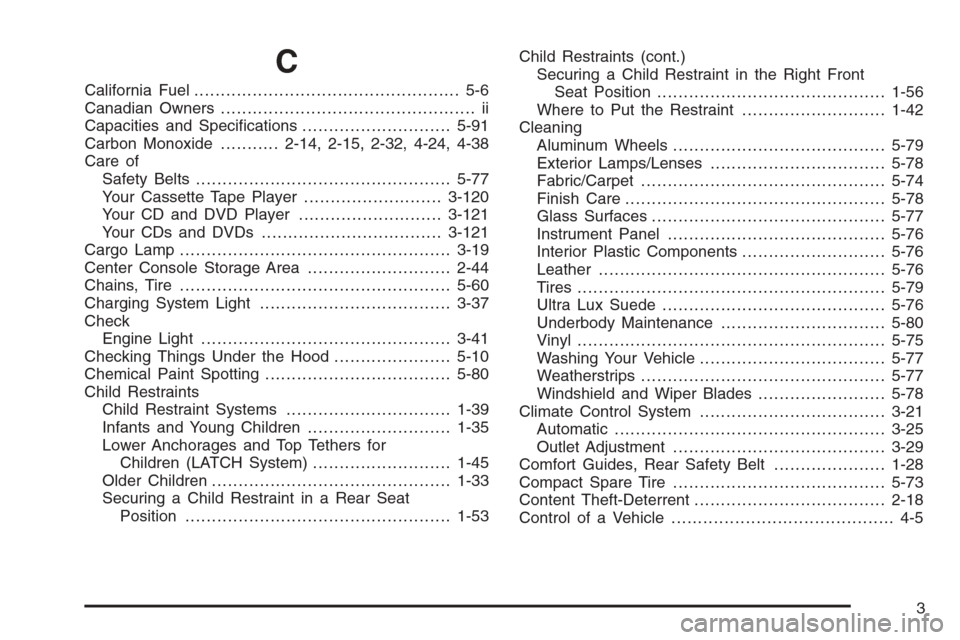2005 CHEVROLET MALIBU seat adjustment
[x] Cancel search: seat adjustmentPage 7 of 434

Front Seats......................................................1-2
Manual Seats................................................1-2
Six-Way Power Driver Seat..............................1-3
Manual Lumbar..............................................1-3
Heated Seats.................................................1-4
Reclining Seatbacks........................................1-4
Head Restraints.............................................1-6
Passenger Folding Seatback............................1-6
Rear Seats.......................................................1-8
Rear Seat Operation.......................................1-8
Safety Belts...................................................1-10
Safety Belts: They Are for Everyone................1-10
Questions and Answers About Safety Belts......1-15
How to Wear Safety Belts Properly.................1-16
Driver Position..............................................1-16
Shoulder Belt Height Adjustment.....................1-23
Safety Belt Use During Pregnancy..................1-24
Right Front Passenger Position.......................1-24
Rear Seat Passengers..................................1-25
Rear Safety Belt Comfort Guides....................1-28
Safety Belt Pretensioners...............................1-32
Safety Belt Extender.....................................1-32Child Restraints.............................................1-33
Older Children..............................................1-33
Infants and Young Children............................1-35
Child Restraint Systems.................................1-39
Where to Put the Restraint.............................1-42
Lower Anchors and Tethers for
Children (LATCH)......................................1-45
Securing a Child Restraint in a Rear Seat
Position...................................................1-53
Securing a Child Restraint in the Right Front
Seat Position............................................1-56
Airbag System...............................................1-60
Where Are the Airbags?................................1-62
When Should an Airbag In�ate?.....................1-66
What Makes an Airbag In�ate?.......................1-67
How Does an Airbag Restrain?.......................1-67
What Will You See After an Airbag In�ates?.....1-68
Passenger Sensing System............................1-70
Servicing Your Airbag-Equipped Vehicle...........1-74
Adding Equipment to Your Airbag-Equipped
Vehicle....................................................1-74
Restraint System Check..................................1-75
Checking the Restraint Systems......................1-75
Replacing Restraint System Parts After
a Crash...................................................1-76
Section 1 Seats and Restraint Systems
1-1
Page 8 of 434

Front Seats
Manual Seats
{CAUTION:
You can lose control of the vehicle if you try to
adjust a manual driver’s seat while the vehicle
is moving. The sudden movement could startle
and confuse you, or make you push a pedal
when you do not want to. Adjust the driver’s
seat only when the vehicle is not moving.If your vehicle has a
manual seat adjustment,
lift the bar located
under the front of the seat
to unlock it.
Slide the seat to where you want it and release the bar.
Try to move the seat back and forth to be sure the
seat is locked in place.
Power Lift Seat
If your vehicle has this feature, to move the power lift
seat forward or rearward, pull up on the lever located
under the front of the driver’s seat to unlock it. Slide the
seat to where you want it and release the lever. Try
to move the seat with your body to make sure the seat
is locked into place.
To raise or lower the power lift seat, hold the switch
located on the outboard side of the driver’s seat up
or down.
1-2
Page 161 of 434

If your vehicle has the remote start feature, the rear
defogger and heated mirrors will automatically be
turned on if it is cold outside. The indicator light will
not be on. When the vehicle transitions out of remote
start mode the rear defogger and heated mirrors will
turn off.
Notice:Do not use a razor blade or sharp object
to clear the inside rear window. Do not adhere
anything to the defogger grid lines in the rear glass.
These actions may damage the rear defogger.
Repairs would not be covered by your warranty.
Outlet Adjustment
Use the thumbwheels on the air outlets, located on the
center and on the sides of the instrument panel, to
change the horizontal direction of the air�ow. Use the
tabs on the outlet vanes to change the vertical direction
of the air�ow. Use the tabs on the outlet vanes to
shut off air�ow to the outlets.
The two upper outlets in the center of the instrument
panel are dedicated to the rear seats. These outlets
are �xed to aim air�ow into the rear seats to help
cool the rear occupants in hot weather. Air�ow can
be shut off at the upper outlets by turning the vertical
thumbwheel. The louvers are �xed, do not attempt
to move them or they may break.
Operation Tips
Clear away any ice, snow or leaves from the air
inlets at the base of the windshield that may
block the �ow of air into your vehicle.
Use of non-GM approved hood de�ectors may
adversely affect performance of the system.
Keep the path under the front seats clear of objects
to help circulate the air inside of your vehicle more
effectively.
When an objectionable odor outside the vehicle
is encountered, use the recirculation mode, with
the temperature knob at a comfortable setting
to prevent the odor from entering the vehicle through
the ventilation system. This can be helpful when
driving through a long tunnel with poor ventilation.
However, extended usage of this mode in cold or
cool weather can cause window fogging.
3-31
Page 423 of 434

C
California Fuel.................................................. 5-6
Canadian Owners................................................ ii
Capacities and Speci�cations............................5-91
Carbon Monoxide...........2-14, 2-15, 2-32, 4-24, 4-38
Care of
Safety Belts................................................5-77
Your Cassette Tape Player..........................3-120
Your CD and DVD Player...........................3-121
Your CDs and DVDs ..................................3-121
Cargo Lamp...................................................3-19
Center Console Storage Area...........................2-44
Chains, Tire...................................................5-60
Charging System Light....................................3-37
Check
Engine Light...............................................3-41
Checking Things Under the Hood......................5-10
Chemical Paint Spotting...................................5-80
Child Restraints
Child Restraint Systems...............................1-39
Infants and Young Children...........................1-35
Lower Anchorages and Top Tethers for
Children (LATCH System)..........................1-45
Older Children.............................................1-33
Securing a Child Restraint in a Rear Seat
Position..................................................1-53Child Restraints (cont.)
Securing a Child Restraint in the Right Front
Seat Position...........................................1-56
Where to Put the Restraint...........................1-42
Cleaning
Aluminum Wheels........................................5-79
Exterior Lamps/Lenses.................................5-78
Fabric/Carpet..............................................5-74
Finish Care.................................................5-78
Glass Surfaces............................................5-77
Instrument Panel.........................................5-76
Interior Plastic Components...........................5-76
Leather......................................................5-76
Tires..........................................................5-79
Ultra Lux Suede..........................................5-76
Underbody Maintenance...............................5-80
Vinyl..........................................................5-75
Washing Your Vehicle...................................5-77
Weatherstrips..............................................5-77
Windshield and Wiper Blades........................5-78
Climate Control System...................................3-21
Automatic...................................................3-25
Outlet Adjustment........................................3-29
Comfort Guides, Rear Safety Belt.....................1-28
Compact Spare Tire........................................5-73
Content Theft-Deterrent....................................2-18
Control of a Vehicle.......................................... 4-5
3